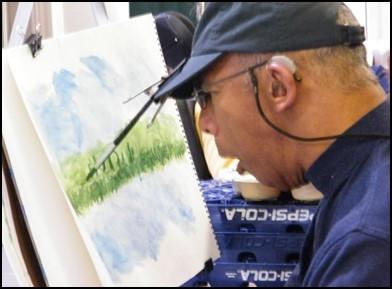Ask Kathy: Making Art Accessible
From Lilliana:
Art is a powerful tool for self-expression. In many public schools, art programs are underfunded and lack sufficient resources. Could you tell me one way art teachers (in any medium) could continue to make sure their classrooms are inclusive, accessible environments for students with disabilities given the lack of resources teachers may have?
Lilliana, this is a great question. Luckily, art teachers are naturally creative people who are good at thinking outside the box. Universal Design for Learning (UDL) is a framework for learning that can be used for all subjects, and I think that it would prove particularly successful with any art form.
Flexibility and choice are at the core of UDL. Students are given the opportunity to take some responsibility for what they are learning. Instructors can teach to their strengths and students can learn in a style that works best for them. More choice means more accessibility.
Accessibility is very important and if a teacher is having difficulty identifying the physical barriers in the classroom, then they should ask the student. They can often express what their needs are. Teachers can also brainstorm with the other teachers, and physical, occupational, or speech therapists to solve these issues.

Kathy Bates' friend Tommy uses his painting cap to create a watercolor landscape
My friend Tommy started painting at the age of sixty. He has Cerebral Palsy and does not have use of his hands. Tommy can paint by moving his head. To paint, he wears a baseball cap with a paintbrush holder fastened to it. He has sold many of his beautiful masterpieces.
The idea for his “painting cap” came from a joking comment made by his driver who said “I wish you could join the painting class. Maybe if I stuck a paintbrush up your nose, you could paint!” The next day the driver came back with the baseball cap that had a paintbrush holder attached to it. That's what I call thinking outside the box, and it didn’t cost anything to make either.
Belief in every student’s ability and being able to imagine the possibilities is any teacher’s best resource for creating a barrier-free learning environment.